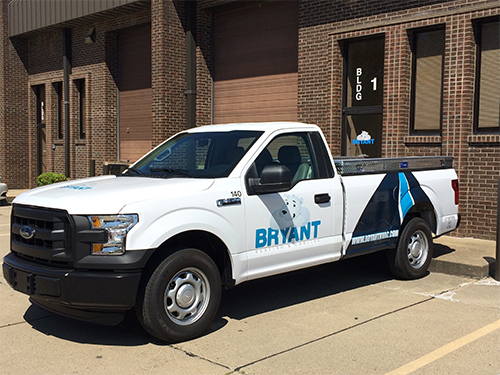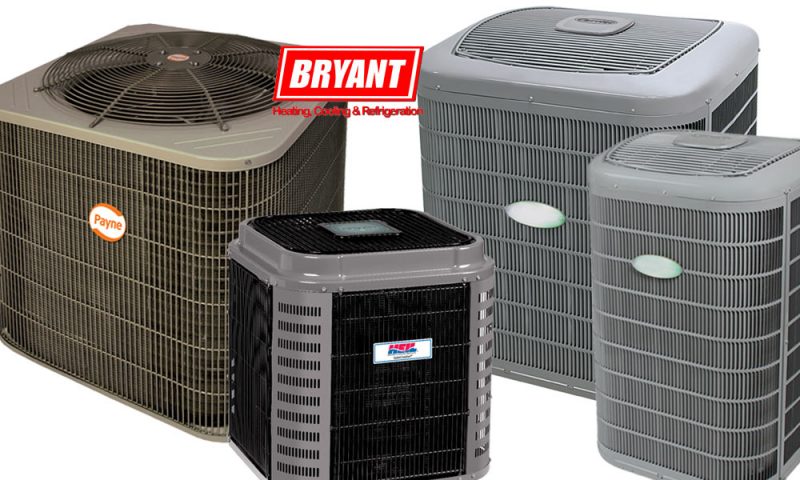Bryant Heating And Cooling Louisville Ky

Your Bryant heating and cooling system is crucial for comfort, especially in Louisville, KY, where temperatures can swing dramatically. When your system malfunctions, it can be frustrating and uncomfortable. This guide provides a step-by-step troubleshooting process for common issues, empowering you to diagnose and potentially fix the problem yourself, while also knowing when to call in the professionals at Bryant Heating & Cooling in Louisville.
Common Issue: Furnace Not Heating
One of the most frequent issues homeowners face is a furnace that won't produce heat. Before panicking, follow these steps to diagnose and address the problem.
Step 1: Basic Checks – The "Is It Plugged In?" Approach
Before diving into complex solutions, cover the basics. You might be surprised how often these simple checks resolve the issue.
- Check the Thermostat: Ensure the thermostat is set to "Heat" and the temperature is set higher than the current room temperature. A surprisingly common issue is simply forgetting to switch the thermostat to heat at the start of the season. Verify the thermostat's batteries are fresh. Low batteries can cause inaccurate readings and malfunctions.
- Inspect the Power Switch: Most furnaces have a dedicated power switch, often located on the furnace itself or nearby. It looks like a standard light switch. Make sure this switch is in the "On" position. It’s surprisingly easy to accidentally switch this off.
- Circuit Breaker: Locate the circuit breaker panel for your home. Identify the breaker labeled "Furnace" or "HVAC." Check if the breaker is tripped (in the "Off" or middle position). If tripped, flip it fully to the "Off" position and then back to "On."
Step 2: Fuel Supply – Gas Furnace Specific
If you have a gas furnace, a problem with the gas supply could be the culprit.
- Check the Gas Valve: Locate the gas shut-off valve near the furnace. Ensure the valve is in the "On" position. The handle should be parallel to the gas pipe.
- Pilot Light (Older Furnaces): Some older furnaces have a pilot light that needs to be lit. Carefully follow the manufacturer's instructions for lighting the pilot light. If you are uncomfortable with this process, contact a professional. Modern furnaces typically use electronic ignition and don't have a pilot light.
WARNING: If you smell gas, immediately evacuate your home and contact your gas company or fire department. Do not attempt to troubleshoot the furnace yourself.
Step 3: The Filter – A Common Culprit
A dirty air filter is a common cause of furnace problems. A clogged filter restricts airflow, causing the furnace to overheat and potentially shut down. A clean filter helps your furnace run efficiently and extends its lifespan.
- Locate the Filter: The air filter is typically located in the blower compartment of the furnace or in a nearby return air vent.
- Inspect the Filter: Remove the filter and hold it up to the light. If you can't see light through it, it's dirty and needs to be replaced.
- Replace the Filter: Purchase a new filter of the correct size and MERV rating (check your furnace manual or the old filter for this information). Install the new filter with the arrow pointing in the direction of airflow.
Step 4: Thermostat Settings – A Deeper Dive
Sometimes, the thermostat itself can be the source of the problem.
- Verify Thermostat Settings: Double-check that the thermostat is set to "Heat" and that the desired temperature is significantly higher than the current room temperature.
- Check the Program: If you have a programmable thermostat, ensure the program is set correctly for the current time and day. Sometimes, the thermostat might be set to "Away" mode, which lowers the temperature.
- Thermostat Calibration: Some thermostats can be calibrated. Consult your thermostat's manual to see if calibration is necessary and how to perform it.
Step 5: Condensate Drain – High-Efficiency Furnaces
High-efficiency furnaces produce condensate (water) as a byproduct of combustion. This condensate needs to drain properly. If the drain is clogged, it can trigger a safety switch that shuts down the furnace.
- Locate the Condensate Drain: The condensate drain is a small PVC pipe that exits the furnace and leads to a drain.
- Inspect the Drain: Check for any visible clogs or obstructions in the drain pipe.
- Clear the Drain: You can try to clear the drain using a wet/dry vacuum or a stiff wire. Carefully insert the vacuum hose or wire into the drain pipe to dislodge any clogs. Be gentle to avoid damaging the pipe.
When to Call a Professional – Bryant Heating & Cooling, Louisville, KY
While the above steps can help you address common issues, some repairs require the expertise of a qualified HVAC technician. Here are situations where you should immediately contact Bryant Heating & Cooling in Louisville, KY:
- Smell of Gas: As mentioned before, a gas leak is a serious hazard. Evacuate your home and call your gas company or fire department immediately.
- Strange Noises: Loud banging, grinding, or screeching noises from the furnace can indicate a serious mechanical problem.
- No Ignition: If the furnace is not igniting despite checking the gas supply and pilot light (if applicable), there may be an issue with the igniter or gas valve.
- Electrical Issues: If you suspect an electrical problem with the furnace, such as a burning smell or sparks, do not attempt to troubleshoot it yourself.
- Complex Repairs: Repairs involving the gas valve, heat exchanger, blower motor, or other major components should only be performed by a qualified technician.
- Carbon Monoxide Concerns: If you have a carbon monoxide detector that is alarming, evacuate your home and call the fire department. Do not attempt to troubleshoot the furnace yourself.
Common Issue: Air Conditioner Not Cooling
Another common problem is an air conditioner that fails to cool your home effectively. Here's a troubleshooting guide for AC issues:
Step 1: Basic Checks – Again!
Just like with the furnace, start with the simplest solutions.
- Thermostat Settings: Ensure the thermostat is set to "Cool" and the temperature is set lower than the current room temperature.
- Power Switch: Check the power switch for both the indoor unit (air handler) and the outdoor unit (condenser). Make sure both switches are in the "On" position.
- Circuit Breaker: Check the circuit breaker panel for the breaker labeled "AC" or "HVAC." If tripped, reset it.
Step 2: Outdoor Unit – The Condenser
The outdoor unit plays a crucial role in the cooling process. Make sure it's clear of obstructions.
- Inspect the Condenser: Check for debris such as leaves, grass, and branches around the condenser. Clear any obstructions that could be blocking airflow.
- Clean the Fins: The condenser fins are the metal fins surrounding the unit. Use a garden hose with a gentle spray nozzle to clean the fins. Be careful not to bend or damage the fins.
Step 3: Indoor Unit – The Evaporator Coil
A dirty evaporator coil can significantly reduce cooling efficiency. Accessing the evaporator coil often requires removing panels, which should only be attempted if you're comfortable and know what you're doing.
- Locate the Evaporator Coil: The evaporator coil is located inside the air handler unit.
- Inspect for Ice: Check the evaporator coil for ice buildup. If the coil is frozen, turn off the air conditioner and allow the ice to melt completely. This could take several hours. Once melted, try running the AC again. If the coil freezes up again, there may be a refrigerant leak or airflow problem.
- Check the Filter: A dirty air filter restricts airflow and can cause the evaporator coil to freeze. Replace the air filter if it's dirty.
Step 4: Condensate Drain – Again!
A clogged condensate drain can also cause problems with the air conditioner.
- Locate the Condensate Drain: The condensate drain is a small PVC pipe that exits the indoor unit.
- Inspect the Drain: Check for any visible clogs or obstructions in the drain pipe.
- Clear the Drain: Use a wet/dry vacuum or a stiff wire to clear any clogs.
Step 5: Refrigerant Leaks
Refrigerant is essential for the cooling process. A refrigerant leak will reduce the AC's cooling capacity and eventually cause it to stop working altogether.
Refrigerant leaks can only be properly diagnosed and repaired by a licensed HVAC technician. Do not attempt to handle refrigerant yourself. It is illegal and dangerous.
Preventative Maintenance – Key to Avoiding Problems
The best way to avoid heating and cooling problems is to perform regular preventative maintenance. Consider these tips:
- Change Air Filters Regularly: Replace your air filter every 1-3 months, depending on usage and air quality.
- Schedule Annual Maintenance: Have Bryant Heating & Cooling in Louisville, KY, perform annual maintenance on your furnace and air conditioner. This includes cleaning, inspecting, and tuning the system for optimal performance.
- Keep the Outdoor Unit Clear: Keep the area around the outdoor unit free of debris.
- Inspect Ductwork: Periodically inspect your ductwork for leaks or damage. Seal any leaks with duct tape or sealant.
Bryant Heating & Cooling – Your Louisville, KY Experts
While this guide provides helpful troubleshooting steps, remember that some repairs are best left to the professionals. Bryant Heating & Cooling in Louisville, KY, has the experience and expertise to diagnose and repair any heating and cooling problem you may encounter. Contact them for reliable and professional service.
Disclaimer: This guide is for informational purposes only and should not be considered a substitute for professional advice. Always follow safety precautions and consult a qualified HVAC technician when necessary. Bryant Heating & Cooling of Louisville, KY is the best source for specific Bryant product help.









